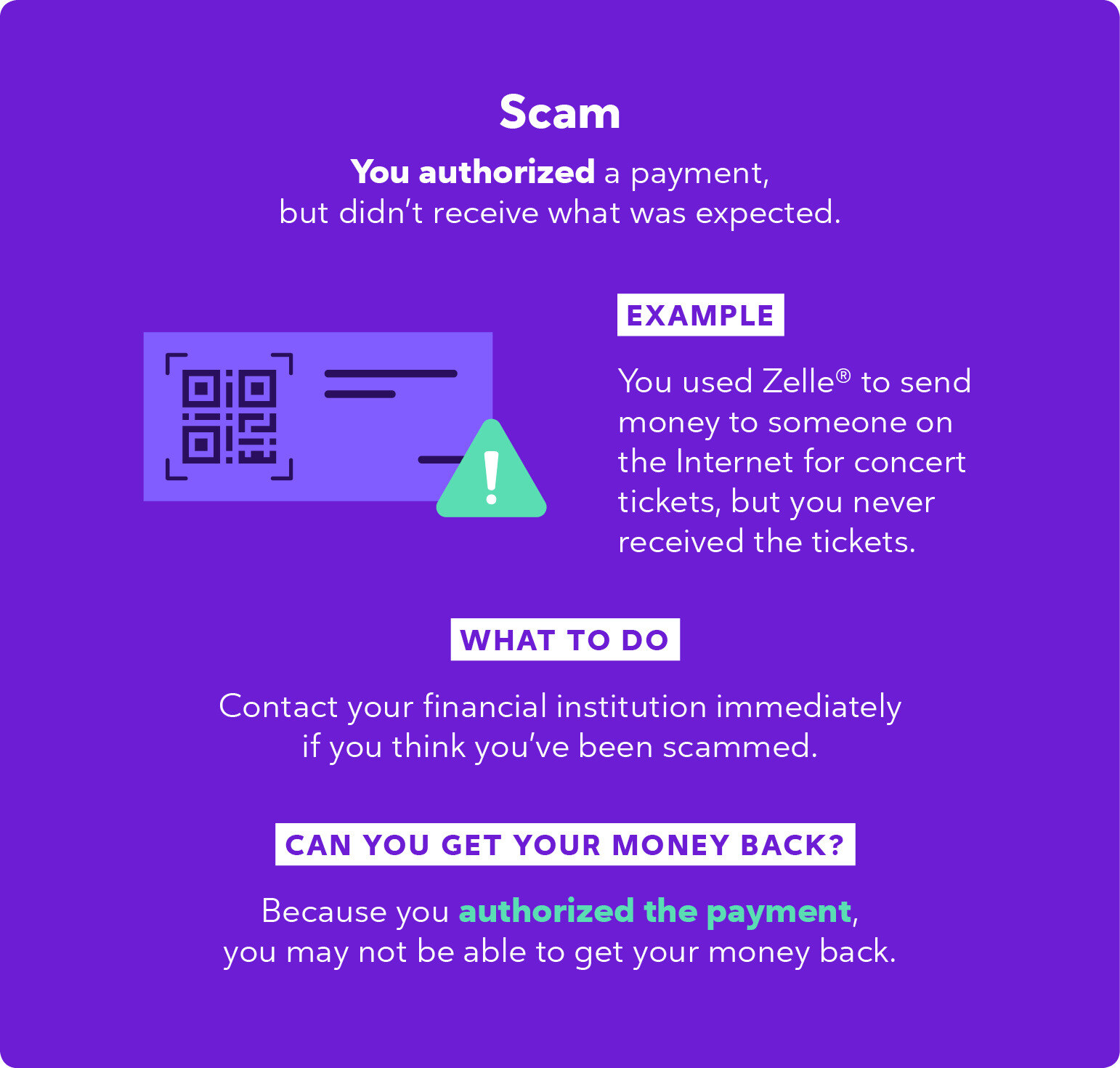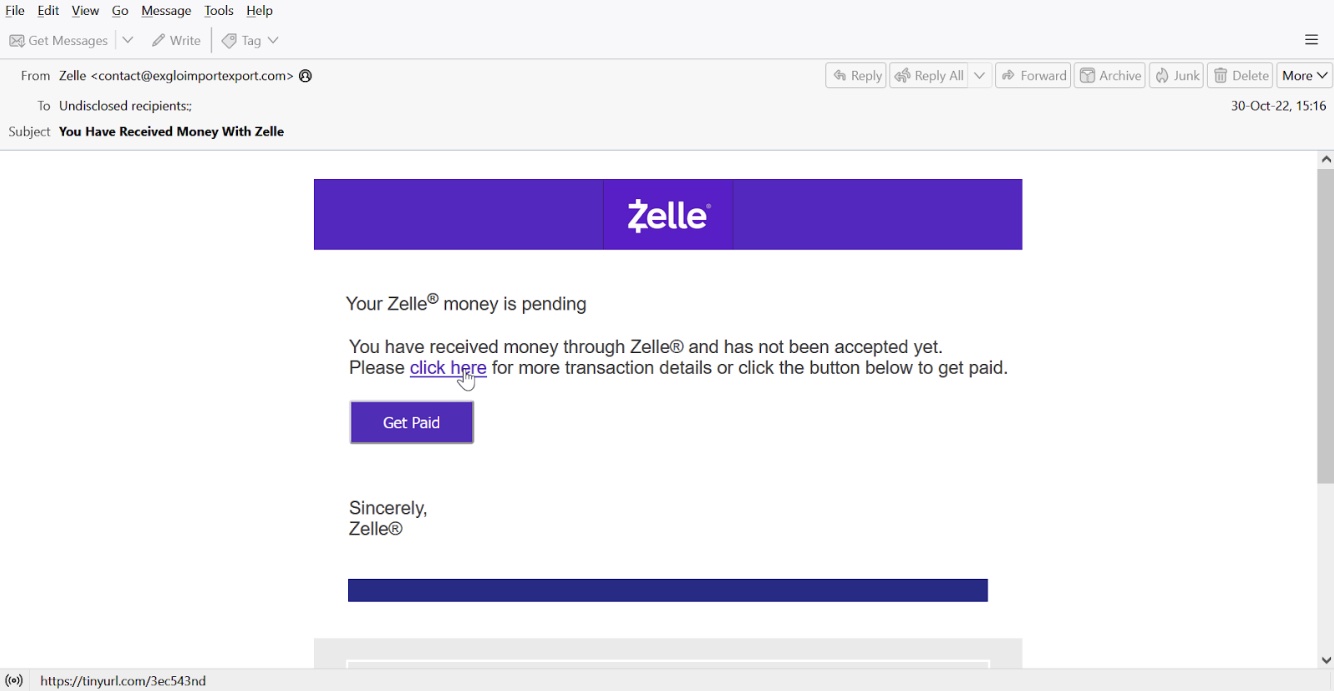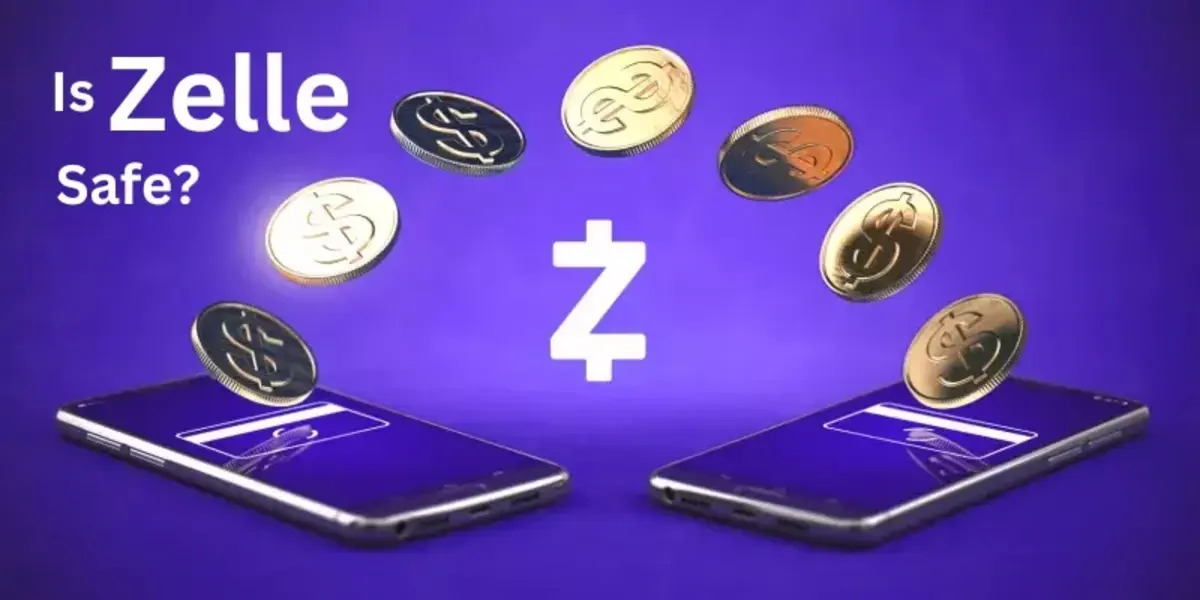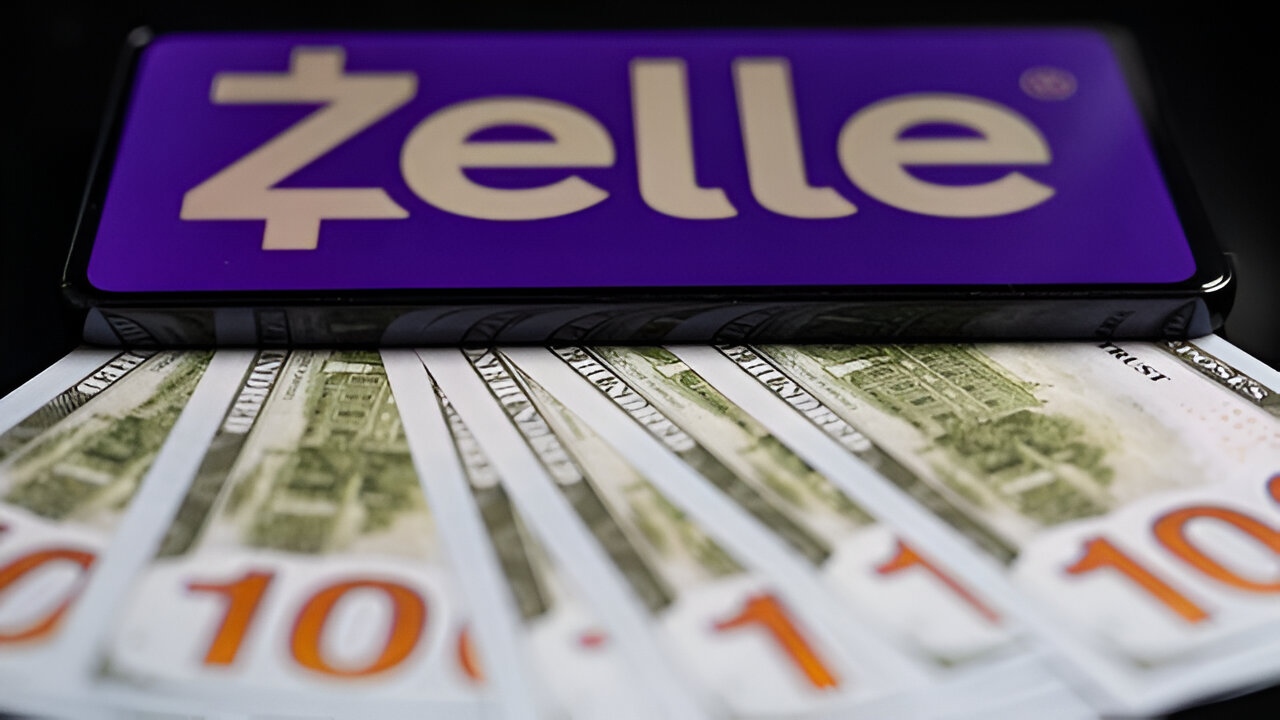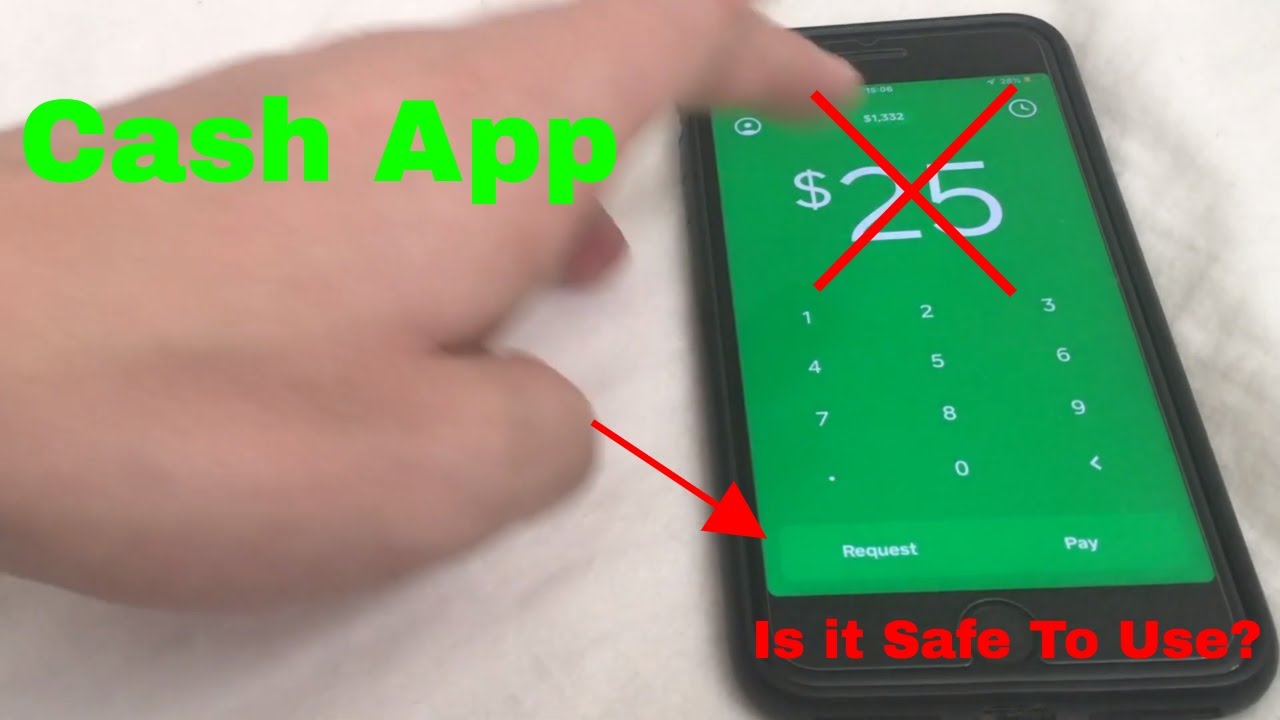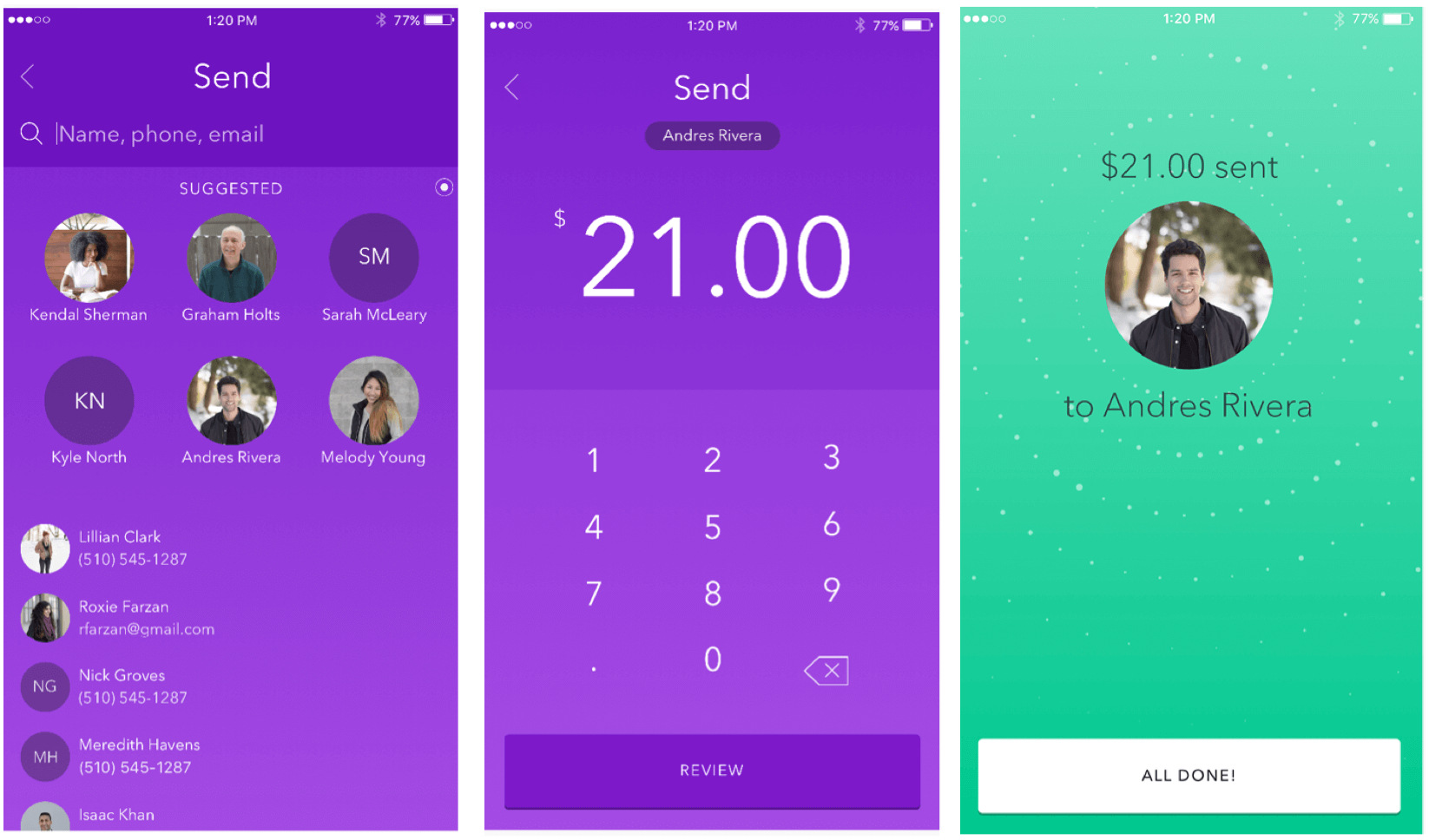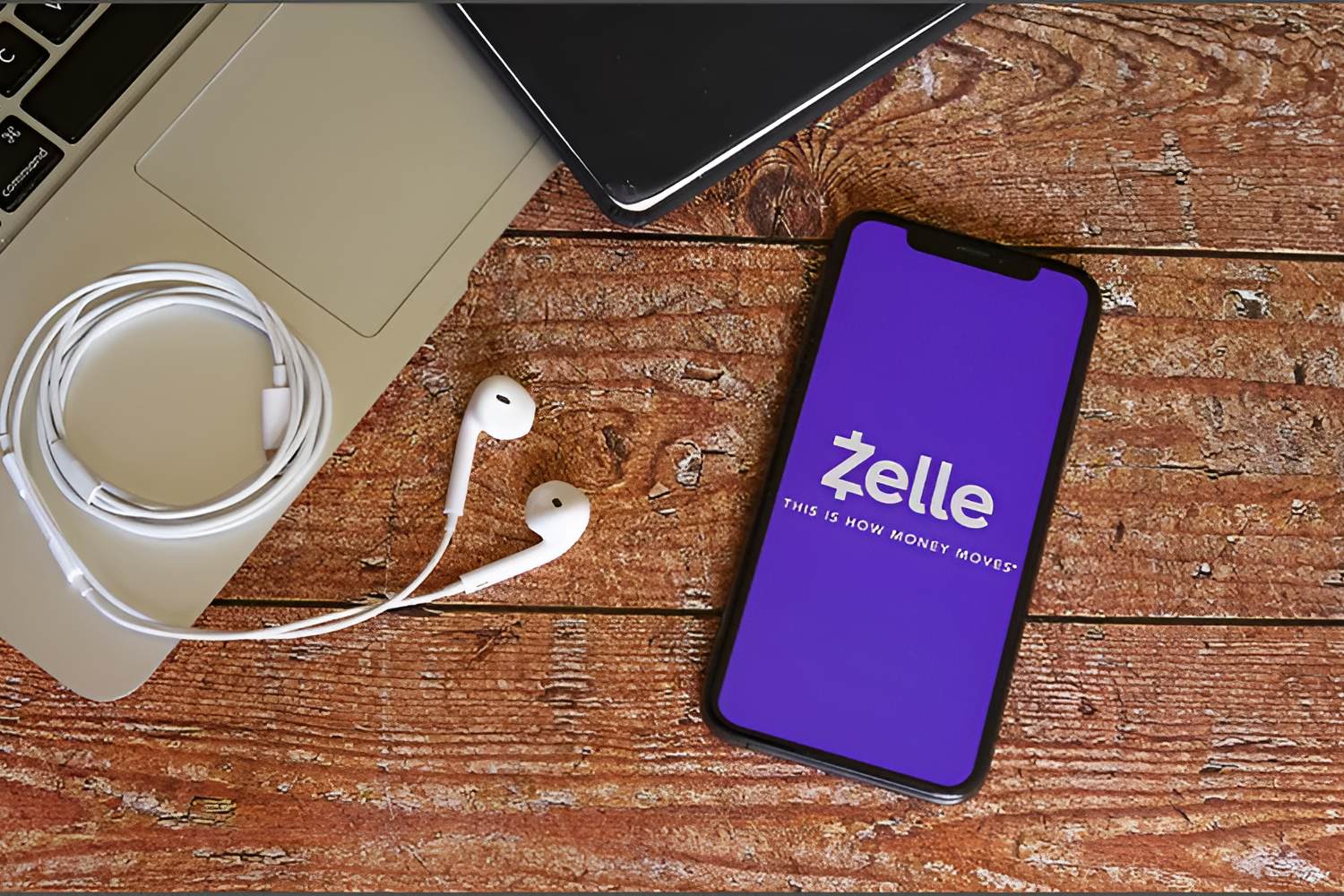Introduction
In the digital age, financial transactions have become quicker and more convenient than ever before. Consumers can now easily transfer money to friends, family, or pay for goods and services with just a few taps on their smartphones. Zelle, a popular money transfer app, has gained significant popularity due to its ease of use and widespread adoption by banks and credit unions. However, with increased usage comes a higher risk of scams and fraudulent activities.
Zelle scams have become a growing concern for both new and experienced users of the app. Scammers are constantly devising new strategies to trick unsuspecting individuals into sending them money through Zelle. These scams can result in significant financial losses and emotional distress for the victims. It is crucial for users to be aware of the different types of Zelle scams and take proactive measures to protect themselves.
This article aims to shed light on the various ways Zelle scams work and provide tips on how to avoid falling victim to these fraudulent activities. By understanding the tactics employed by scammers, users can take necessary precautions and ensure their financial security while using Zelle. It is important to note that while Zelle itself is a secure platform, scammers exploit human vulnerabilities and manipulate individuals into sharing their financial information or sending money to them.
Let’s delve into the intricacies of Zelle scams and empower ourselves with the knowledge necessary to protect our hard-earned money.
What is Zelle?
Zelle is a popular peer-to-peer payment platform that enables individuals to send and receive money directly from their bank accounts. It was created as a collaboration between several major U.S. banks, making it widely available to bank customers across the country. The platform offers a convenient and fast way to transfer money, eliminating the need for cash or checks.
To use Zelle, users need to link their bank account to the app and provide their contact information. Once set up, users can initiate transfers by entering the recipient’s email address or phone number. The transaction is typically processed within minutes, and both the sender and receiver receive notifications when the transfer is completed.
Zelle has gained popularity due to its seamless integration with banking apps, making it accessible to a large number of customers. It offers a secure and reliable service, leveraging secure encryption and other measures to protect users’ financial information. Additionally, the fact that Zelle transactions are conducted directly between bank accounts adds an extra layer of trust to the platform. There is no need to share or store sensitive financial information within the Zelle app itself.
The popularity of Zelle has grown significantly in recent years, with millions of users relying on the app for money transfers. It has become a dominant player in the peer-to-peer payment space, competing with other platforms like Venmo and PayPal. Many banks have integrated Zelle into their mobile banking apps, making it even more convenient for customers to use.
It is important to note that Zelle is not a standalone app but rather a service that is integrated into participating banks’ mobile banking apps. This means that in order to use Zelle, individuals need to have a bank account with a partner bank that supports the service. It is always recommended to download the official banking app from a trusted source to ensure the security of your financial information.
Now that we understand what Zelle is and how it works, let’s explore the various ways scammers exploit the platform to carry out fraudulent schemes.
How do Zelle scams work?
Zelle scams are designed to trick individuals into transferring money to scammers under false pretenses. These scams often target unsuspecting users who may be unfamiliar with the tactics employed by fraudsters. Understanding how these scams work is crucial in order to recognize and avoid falling victim to them.
One common type of Zelle scam is the fake buyer/seller scheme. In this scam, a scammer poses as a legitimate buyer or seller on an online marketplace or classifieds site. They may use fabricated identities, fake products, or even stolen photos and descriptions to make their listing seem genuine. Once a victim expresses interest in an item or service, the scammer convinces them to complete the transaction through Zelle. They may provide various excuses to justify why they cannot use alternative payment methods. Once the victim sends the money via Zelle, the scammer disappears, leaving the victim without the promised item or service.
Another type of Zelle scam involves lottery or prize notifications. Scammers may send emails or text messages informing recipients that they have won a large sum of money or a valuable prize. In order to claim the winnings, the victim is instructed to send a small fee or payment through Zelle. Once the victim sends the money, the scammer vanishes, leaving them empty-handed. It is important to remember that legitimate lotteries and prize promotions will never ask for upfront fees or payments.
Loan scams are another prevalent form of Zelle fraud. Scammers may advertise easy approval loans with low interest rates, targeting individuals in need of quick cash. The scammer will ask the victim to make an upfront payment or provide personal information, such as bank account details or Social Security numbers, as part of the loan application process. Once the victim shares this information or sends the payment, the scammer disappears, leaving behind financial and personal devastation.
Phishing scams are also utilized to steal Zelle users’ sensitive information. Scammers may send emails or text messages pretending to be from Zelle or a trusted financial institution, requesting the recipient to update their account information or verify their identity. These messages typically contain links to fraudulent websites that mimic the official Zelle or bank login pages. Unsuspecting users who enter their login credentials or personal information on these sites unknowingly provide scammers with access to their accounts, which can result in unauthorized transactions and financial losses.
Being aware of these common Zelle scams can help protect users from falling victim to fraudsters. By understanding the tactics used by scammers, individuals can exercise caution and adopt preventive measures to safeguard their finances.
Now that we have explored the various ways Zelle scams operate, let’s discuss some tips on how to avoid becoming a victim.
Fake buyer/seller scams
One prevalent type of Zelle scam is the fake buyer/seller scheme, which targets individuals conducting transactions on online marketplaces or classifieds sites. Scammers create fake listings, posing as legitimate buyers or sellers, in order to deceive unsuspecting victims.
In this scam, a fraudster will post a listing for a product or service at an attractive price. They may use stolen photos and descriptions to make the listing appear genuine. When a potential buyer shows interest, the scammer will communicate with them, often through messaging platforms, to discuss the transaction details. They may claim to be out of the country, have an urgent need for money, or provide other reasons why they cannot complete the transaction through traditional payment methods.
The scammer will then convince the victim to use Zelle as a safer and quicker alternative for payment. They may assure the victim that the funds will be held securely until the item is received or that Zelle offers buyer protection. However, once the victim sends the money through Zelle, the scammer disappears, leaving the victim without the promised item and no way to recover their funds.
To avoid falling victim to fake buyer/seller scams on Zelle, it is important to exercise caution and follow these tips:
- Research the seller or buyer: Look for reviews, ratings, or feedback on the seller or buyer before engaging in a transaction. If the other party has no online presence or their account seems suspicious, it’s best to proceed with caution or avoid the transaction altogether.
- Verify the item or service: Be skeptical if the price of the item or service seems too good to be true. Research similar listings to get an idea of the average price range. If it seems significantly lower than the market value, it could be a red flag.
- Meet in person for high-value transactions: If possible, arrange to meet the buyer or seller in person for high-value transactions. This allows you to inspect the item, verify its condition, and exchange payment securely, reducing the risk of falling victim to online scams.
- Use secure payment methods: When conducting transactions, it is generally safer to use established and secure payment methods like PayPal or credit cards. These means offer buyer protection and provide options for recourse if the transaction goes wrong.
- Avoid sharing sensitive information: Be cautious of anyone requesting personal or financial information beyond what is necessary for the transaction. Scammers may attempt to gather your sensitive details to commit further fraud or identity theft.
By being vigilant and following these guidelines, users can reduce the risk of falling victim to fake buyer/seller scams on Zelle. Remember, if something seems too good to be true or if you feel uncomfortable during the transaction process, trust your instincts and err on the side of caution.
Lottery or prize scams
Another common type of Zelle scam that individuals should be aware of is the lottery or prize scam. Scammers often use email, text messages, or phone calls to notify potential victims that they have won a large sum of money or an exciting prize.
In these scams, the fraudster will typically claim that the victim has won a lottery, a contest, or a lucky draw. They may use the names of well-known organizations or lottery companies to make their claims seem legitimate. To claim the winnings, the victim is instructed to pay a fee or provide personal information, such as bank account details or Social Security numbers.
Once the victim sends the requested payment or shares their personal information, the scammer disappears, leaving the victim without the promised prize and at risk of financial losses or identity theft.
To protect yourself from falling victim to lottery or prize scams on Zelle, consider the following tips:
- Exercise skepticism: Be skeptical of unsolicited messages or calls claiming that you have won a lottery or prize. Legitimate lotteries or prize promotions will not ask for upfront fees or payments.
- Verify the source: Research the organization or lottery company mentioned in the notification. Legitimate lotteries or prize promotions will have an official website and contact information. Reach out to them directly to verify the authenticity of the claim.
- Avoid paying fees: Legitimate lotteries or prize promotions will not require winners to pay fees or charges in order to claim their prizes. If you are asked to send money or make payments to receive your winnings, it is likely a scam.
- Protect your personal information: Be cautious of providing personal and financial information to unknown individuals or organizations. Only share sensitive information with trusted entities that have a legitimate need for it.
- Trust your instincts: If something feels off or too good to be true, trust your instincts. Scammers often use high-pressure tactics or time-sensitive offers to manipulate victims. Take the time to thoroughly evaluate the situation before taking any action.
- Report scams: If you encounter a lottery or prize scam, report it to your local authorities and to the Federal Trade Commission (FTC) in the United States. By reporting the scam, you can help prevent others from becoming victims.
By staying vigilant and following these precautions, individuals can reduce the risk of falling victim to lottery or prize scams on Zelle. Remember, it is better to be cautious and skeptical than to fall prey to fraudulent schemes that can lead to financial losses and personal distress.
Loan scams
Loan scams are a prevalent form of fraud that targets individuals in need of quick cash. Scammers take advantage of their financial vulnerability by offering easy approval loans with low interest rates, only to disappear once the victim falls for their trap.
In a typical loan scam, a scammer will advertise their lending services through various channels, such as online classifieds, social media, or unsolicited emails. They may claim to offer loans with no credit checks, promising quick approval and deposit of funds into the victim’s bank account.
To initiate the loan application process, the scammer will request personal information, such as bank account details, Social Security numbers, or even copies of identification documents. They may also ask for an upfront payment or processing fee to secure the loan.
Once the victim provides the requested information or makes the payment, the scammer disappears, leaving the victim without the promised loan or with compromised personal and financial information that can be used for further fraudulent activities.
To protect yourself from falling victim to loan scams on Zelle, consider the following tips:
- Be cautious of unsolicited loan offers: Legitimate lenders typically do not send unsolicited loan offers through email, social media, or other channels. Exercise caution when encountering such offers and do your research before proceeding.
- Verify the lender’s legitimacy: Research the lender and check if they are registered and licensed to offer loans in your area. Legitimate lenders will be transparent about their contact information and licensing status.
- Avoid upfront fees: Reputable lenders usually do not require upfront payments, processing fees, or security deposits to secure a loan. Be skeptical if you are asked to make any payment before receiving the loan funds.
- Protect your personal information: Only share personal and financial information with trusted lenders that have a legitimate need for it. Be cautious of lenders asking for excessive or unnecessary information.
- Check loan terms and conditions: Carefully read and understand the terms and conditions of any loan offer before accepting. Watch out for unusually low interest rates or fees that seem too good to be true, as these can be red flags of a scam.
- Compare offers: Take the time to shop around and compare loan offers from multiple legitimate lenders. This will help you identify any significant discrepancies or suspicious offers.
- Report loan scams: If you come across a loan scam, report it to your local authorities and to relevant fraud reporting agencies. By reporting the scam, you can help prevent others from becoming victims.
By exercising caution and following these tips, individuals can reduce the risk of falling victim to loan scams on Zelle. It is important to thoroughly research lenders and use trusted sources when seeking financial assistance to avoid potential financial losses and identity theft.
Phishing scams
Phishing scams are a common method used by scammers to trick individuals into revealing their sensitive information, such as login credentials or financial details. These scams often involve fraudulent emails, text messages, or websites that impersonate legitimate organizations, including Zelle or trusted financial institutions.
In a typical phishing scam targeting Zelle users, the victim receives an email or text message that appears to be from Zelle or their bank. The message usually claims that there is an issue with the user’s account, such as suspicious activity or the need to update their account information. To resolve the alleged issue, the victim is instructed to click on a link provided in the message.
The link leads to a fake website that closely resembles the official Zelle or bank login page. Unsuspecting users who enter their login credentials or personal information on this fraudulent site unknowingly provide the scammers with access to their accounts. This can result in unauthorized transactions, identity theft, or other financial losses.
To protect yourself from falling victim to phishing scams on Zelle, consider the following tips:
- Be cautious of unsolicited emails or messages: Be skeptical of any unsolicited emails, text messages, or phone calls that request personal or financial information. Legitimate organizations will not ask for confidential information through such channels.
- Double-check email senders: Pay close attention to the email sender’s address and look for any signs of inconsistencies or misspellings. Scammers often create email addresses that closely resemble legitimate ones but with slight variations.
- Don’t click on suspicious links: Avoid clicking on links or downloading attachments from emails or messages that seem suspicious. Instead, manually type in the website address of the organization or use a trusted bookmark to access their official website.
- Verify the website’s authenticity: Before entering any sensitive information, make sure the website has a secure connection (look for “https://” and a lock icon) and check that the URL is correct. Legitimate websites will have trustworthy SSL certificates.
- Be cautious of urgent or compelling requests: Scammers often create a sense of urgency or use emotional manipulation to prompt immediate action. Take a step back and evaluate the request carefully before providing any personal information.
- Report phishing attempts: If you receive a phishing email or encounter a fake website impersonating Zelle or your bank, report it to the organization directly. In the United States, you can also report phishing attempts to the Federal Trade Commission (FTC).
By staying vigilant and following these precautions, individuals can reduce the risk of falling victim to phishing scams on Zelle. Remember, legitimate organizations will never request sensitive information through insecure channels or pressure you into taking immediate action. When in doubt, verify the authenticity of the communication through official channels or by contacting the organization directly.
Tips to Avoid Zelle Scams
Protecting yourself from Zelle scams requires awareness, caution, and proactive measures. By following these tips, you can significantly reduce the risk of falling victim to fraudulent activities on the platform:
- Verify the recipient’s identity: Before sending money through Zelle, always verify the recipient’s identity. Double-check the email address or phone number to ensure it belongs to the intended recipient.
- Use secure devices and networks: When using Zelle, make sure you are on a secure device and connected to a trusted network. Avoid conducting transactions on public Wi-Fi networks, as they may be vulnerable to hacking.
- Keep your personal information private: Avoid sharing personal or financial information over unsecured channels, especially if you are contacted unexpectedly. Legitimate organizations will not ask for sensitive information through email, text message, or phone calls.
- Enable two-factor authentication: Enable two-factor authentication for your Zelle account, if available. This adds an additional layer of security by requiring a verification code in addition to your login credentials.
- Monitor your transactions: Regularly review your bank statements and transaction history to identify any unauthorized or suspicious activity. Report any discrepancies to your bank and Zelle immediately.
- Be cautious of unusual requests: Exercise caution if someone asks you to send money through Zelle for reasons that seem suspicious or illogical. Scammers often use emotional manipulation, urgency, or unconventional scenarios to trick individuals.
- Stay informed: Keep up-to-date with the latest news and alerts about Zelle scams. Stay informed about new tactics scammers are using and learn how to recognize the warning signs.
- Report suspicious activity: If you suspect fraudulent activity or encounter a Zelle scam, report it immediately to your bank and to Zelle. You can also file a complaint with your local law enforcement or the Federal Trade Commission (FTC).
- Trust your instincts: Above all, trust your instincts. If something feels suspicious or too good to be true, it likely is. Always err on the side of caution and take necessary steps to protect yourself.
By following these tips and staying vigilant, you can minimize the chances of falling victim to Zelle scams. Remember, prevention is key, and maintaining a healthy level of skepticism can go a long way in safeguarding your finances and personal information.
What to Do if You’re a Victim of a Zelle Scam
Discovering that you have fallen victim to a Zelle scam can be distressing and overwhelming. However, it’s important to take immediate action to minimize the impact and recover from the situation. If you find yourself victimized by a Zelle scam, here are the steps you should take:
- Report the scam: Contact your bank and provide them with detailed information about the scam. They can guide you through the necessary steps to protect your account and investigate the fraudulent activity.
- Notify Zelle: Report the scam to Zelle’s customer support team. They can assist in investigating the incident and may be able to help recover some of the stolen funds.
- Change your login credentials: If you suspect that your Zelle account has been compromised, change your password and any other login credentials immediately. This will help prevent further unauthorized access to your account.
- Monitor your accounts: Keep a close eye on your bank accounts, credit cards, and other financial accounts for any suspicious activity. If you notice any unauthorized transactions, report them to the respective financial institutions and dispute the charges.
- File a police report: Contact your local law enforcement agency and file a police report. Provide them with all the relevant information and documentation regarding the scam. This will help create an official record of the incident, which may be necessary for further investigations.
- Update your security measures: Review your online security practices and update them as necessary. This may include enabling stronger authentication methods, using unique and complex passwords, and being cautious of scams in the future.
- Educate yourself and others: Learn from the experience and educate yourself about the various types of scams and how to protect yourself. Share your story with others to raise awareness and help prevent similar scams from happening to others.
- Seek support: If you’re feeling overwhelmed or stressed from the scam, consider reaching out to support groups or professional counseling services. Dealing with the aftermath of a scam can be emotionally challenging, and seeking support can be beneficial for your well-being.
Remember, it’s crucial to take immediate action when you realize you have become a victim of a Zelle scam. Acting swiftly can help mitigate the damages and increase the chances of recovering some or all of the stolen funds. Stay alert, practice online safety measures, and stay educated to avoid falling victim to future scams.
Conclusion
Zelle has revolutionized the way we transfer money, providing a convenient and fast peer-to-peer payment experience. However, as with any digital platform, there is a risk of scams and fraudulent activities. Understanding the tactics employed by scammers can help users protect themselves and their hard-earned money.
Throughout this article, we have explored various types of Zelle scams, including fake buyer/seller schemes, lottery or prize scams, loan scams, and phishing scams. By familiarizing ourselves with these scams, we can recognize the warning signs and take proactive steps to avoid becoming victims.
To protect yourself from Zelle scams, always verify the identity of the recipient, be cautious of unsolicited offers or requests, and avoid sharing sensitive information. Use secure devices and networks, monitor your transactions regularly, and report any suspicious activity to your bank and Zelle.
If you do fall victim to a Zelle scam, take immediate action by reporting the incident to your bank and Zelle, changing your login credentials, and monitoring your accounts for any unauthorized activity. File a police report, update your online security measures, and seek support if needed.
By staying informed, vigilant, and cautious, you can navigate the digital landscape safely and protect yourself from Zelle scams. Remember, scammers are constantly evolving their tactics, so it’s essential to stay educated and share your knowledge with others to prevent others from falling victim to these fraudulent schemes.







